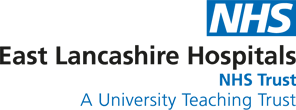Our Electronic Patient Record is live
The Trust's new Millennium Electronic Patient Record (EPR) was launched at all sites in June 2023 and has transformed the way we work and provide patient care. It replaced a number of historic IT systems, as well as paper patient records, that were previously in use.
The EPR allows everyone involved in a patient's care to have access to their records. It gives our staff a complete overview of patients' care in real time, allowing them to spend more time with their patients.
This means the patient care journey is a smoother one. Patients no longer have to repeat the same information multiple times or have to wait for their records to be transported around the Trust - it's all at the clinicians fingertips in a new, digital format.
What does the EPR mean for patients?
This digital transformation marks a big change for the Trust, as it changes the way that we work and provides a smoother care journey for our patients.
Electronic Patient Records provide clinicians with more information at their fingertips, meaning they can make better, more effective decisions.
The new system features decision support tools, meaning their decisions will be made based on the best available information. Plus, they can now take information from many sources.
The Electronic Patient Record provides a more efficient way of working for our colleagues.
It enhances communication across clinicians and teams, reduces duplication and reduces some of the data collection burdens from people by capturing some information automatically.
Paper patient records have been replaced by digital records and our new ways of working will take advantage of this digital approach.
Not only is our digital system more enviromentally-friendly, but it helps to make a number of administrative tasks easier to manage as information will flow around the Trust more easily, in comparision to paper-based health records.
Frequently asked questions
Click on the headings below to learn more about our EPR:
Access to records is only available to authorised staff and there is a strict governance policy around this. The information is stored off site and the data is therefore less vulnerable to cyber-attack or to outside agencies. All patient data is stored in the UK.
Over time paper records will gradually become less relevant and the need to access and store them will reduce. Paper records that need to be accessible on the new system can be scanned in and there is also functionality built in to create forms.
Yes. We’re currently working with Lancashire and South Cumbria Integrated Care System and other regional providers in development of a solution that will feed into local trusts. It is important patients can move smoothly between services.
For example, if you are a patient at Royal Blackburn Hospital your records will be available at all sites.
The system is a hosted system running through East Lancashire Networks. Any community site that has access to East Lancashire’s network can, with the correct permissions and access be able to log into the system.
Doctors have immediate access to detailed information about patients and will quickly be able form a more complete picture. The more information they have got, the better decisions they can make and they will be able to give the patient more relevant information about what's happening to them.
ELHT clinicians have access to the GP summary record within EPR, supporting more effective continuity of care and coordination of joint care.


